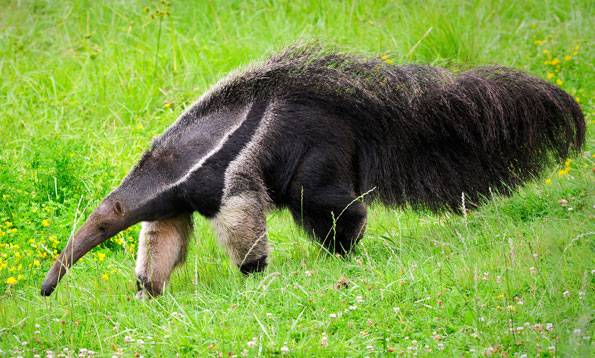Anteaters, those intriguing and unique creatures known for their long snouts and insatiable appetite for insects, hold a special place in the animal kingdom. As remarkable as they are, there's much more to these animals than meets the eye. Here are five captivating facts about anteaters that shed light on their extraordinary nature.
1. Specialized Diet and Anatomy:
Anteaters' diet primarily consists of ants and termites, and they are superbly adapted for this task. Their long, sticky tongue can extend up to two feet, enabling them to reach deep into anthills and termite mounds to extract their prey. Remarkably, their stomachs produce powerful acids that can break down the tough exoskeletons of insects, aiding in digestion.
2. Multiple Species Diversity: While the giant anteater is perhaps the most recognized, there are actually four distinct species of anteaters: the giant anteater, the silky anteater, the northern tamandua, and the southern tamandua. Each species has its own unique characteristics and habits, ranging from the giant anteater's large size to the tamanduas' prehensile tails that help them navigate through trees.
3. Unusual Reproductive Process: Anteaters possess one of the most peculiar reproductive processes in the animal kingdom. They have a low reproductive rate, with females giving birth to just one offspring at a time. Pregnancy lasts around six months, and rather than having a traditional placenta, the embryo is nourished by uterine milk secretions. Once born, the young anteater rides on its mother's back, clinging to her fur for protection.
4. Surprising Adaptations: Anteaters' appearances are not only distinct but also evolutionarily advantageous. Their coarse fur serves as protection against bites from their prey, and their sharp claws aid in tearing through termite mounds. Additionally, their elongated snouts and powerful forelimbs allow them to access hard-to-reach insects that other predators can't easily reach.
5. Conservation Challenges: Despite their captivating qualities, anteaters face significant conservation challenges. Habitat loss due to deforestation, along with illegal trafficking and the pet trade, threatens their populations. Their slow reproductive rate makes it difficult for them to rebound from population declines. Efforts to protect their habitats and combat poaching are crucial to ensuring the survival of these remarkable creatures.
In conclusion, anteaters continue to captivate researchers and wildlife enthusiasts alike with their unique traits and behaviors. From their specialized diet and anatomy to their unusual reproductive process, these creatures offer a glimpse into the diversity and wonder of the animal kingdom. However, their very existence hangs in the balance due to various threats. Recognizing the importance of these animals and taking active steps to protect them is essential to preserving the beauty of our planet's biodiversity.


